Top Rankings
RSU 15/MSAD 15 School District ranks among the top 20% of public school district in Maine for:
Category
Attribute
Graduation Rate
Highest graduation rate (Top 5%)
Community Size
Largest student body (number of students) (Top 1%)
For the 2025 school year, there is 1 public preschool serving 349 students in RSU 15/MSAD 15 School District. This district's average pre testing ranking is 8/10, which is in the top 30% of public pre schools in Maine.
Public Preschool in RSU 15/MSAD 15 School District have an average math proficiency score of 86% (versus the Maine public pre school average of 79%), and reading proficiency score of 89% (versus the 82% statewide average).
Minority enrollment is 10% of the student body (majority Black), which is less than the Maine public preschool average of 14% (majority Black).
Overview
This School District
This State (ME)
# Schools
5 Schools
259 Schools
# Students
1,850 Students
59,048 Students
# Teachers
152 Teachers
5,438 Teachers
Student : Teacher Ratio
12:1
12:1
District Rank
RSU 15/MSAD 15 School District, which is ranked within the top 30% of all 191 school districts in Maine (based off of combined math and reading proficiency testing data) for the 2021-2022 school year.
The school district's graduation rate of 92% has increased from 85-89% over five school years.
Overall District Rank
#58 out of 222 school districts
(Top 30%)
(Top 30%)
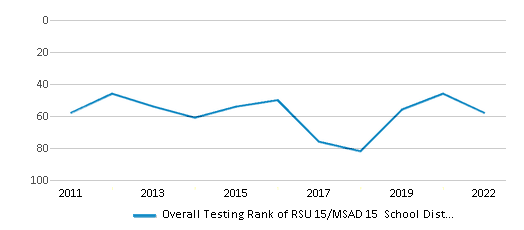
Math Test Scores (% Proficient)
85%
82%
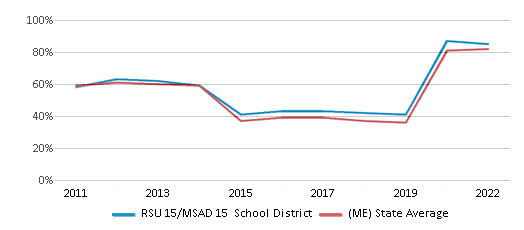
Reading/Language Arts Test Scores (% Proficient)
88%
84%
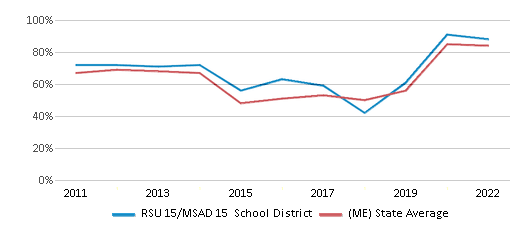
Science Test Scores (% Proficient)
39%
37%
Graduation Rate
92%
86%
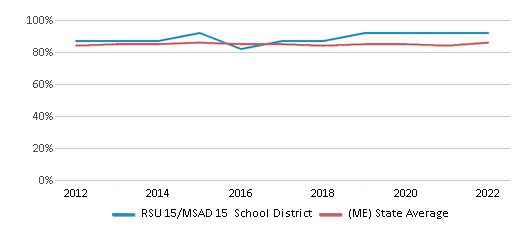
Students by Ethnicity:
Diversity Score
0.16
0.26
# American Indian Students
5 Students
341 Students
% American Indian Students
n/a
1%
# Asian Students
9 Students
561 Students
% Asian Students
n/a
1%
# Hispanic Students
31 Students
1,995 Students
% Hispanic Students
2%
3%
# Black Students
35 Students
3,146 Students
% Black Students
2%
5%
# White Students
1,694 Students
50,694 Students
% White Students
92%
86%
# Hawaiian Students
1 Student
47 Students
% Hawaiian Students
n/a
n/a
# Two or more races Students
75 Students
2,264 Students
% of Two or more races Students
4%
4%
Students by Grade:
# Students in PK Grade:
84
6,275
# Students in K Grade:
129
9,065
# Students in 1st Grade:
130
8,751
# Students in 2nd Grade:
133
8,998
# Students in 3rd Grade:
122
7,460
# Students in 4th Grade:
143
6,832
# Students in 5th Grade:
131
5,562
# Students in 6th Grade:
115
2,965
# Students in 7th Grade:
121
1,380
# Students in 8th Grade:
131
1,417
# Students in 9th Grade:
140
82
# Students in 10th Grade:
144
89
# Students in 11th Grade:
160
86
# Students in 12th Grade:
167
86
# Ungraded Students:
-
-
District Revenue and Spending
The revenue/student of $18,653 in this school district is less than the state median of $21,600. The school district revenue/student has stayed relatively flat over four school years.
The school district's spending/student of $17,256 is less than the state median of $21,191. The school district spending/student has stayed relatively flat over four school years.
Total Revenue
$35 MM
$3,617 MM
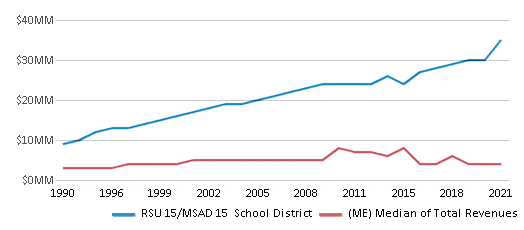
Spending
$32 MM
$3,549 MM
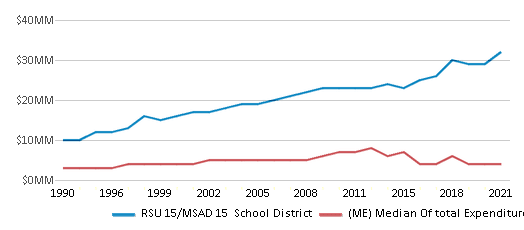
Revenue / Student
$18,653
$21,600

Spending / Student
$17,256
$21,191
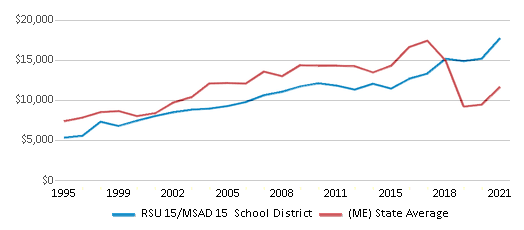
Best RSU 15/MSAD 15 School District Public Preschools (2025)
School
(Math and Reading Proficiency)
(Math and Reading Proficiency)
Location
Grades
Students
Rank: #11.
Burchard A Dunn School
(Math: 86% | Reading: 89%)
Rank:
Rank:
7/
Top 50%10
667 Morse Road
New Gloucester, ME 04260
(207) 657-5050
New Gloucester, ME 04260
(207) 657-5050
Grades: PK-4
| 349 students
Recent Articles

Year-Round Or Traditional Schedule?
Which is more appropriate for your child? A year-round attendance schedule or traditional schedule? We look at the pros and cons.

Why You Should Encourage Your Child to Join a Sports Team
Participating in team sports has a great many benefits for children, there is no doubt. In this article you will learn what those benefits are.

White Students are Now the Minority in U.S. Public Schools
Increasing birth rates among immigrant families from Asia and Central and South America, combined with lower birth rates among white families, means that for the first time in history, public school students in the United States are majority-minority. This shift in demographics poses difficulties for schools as they work to accommodate children of varying language abilities and socio-economic backgrounds.





